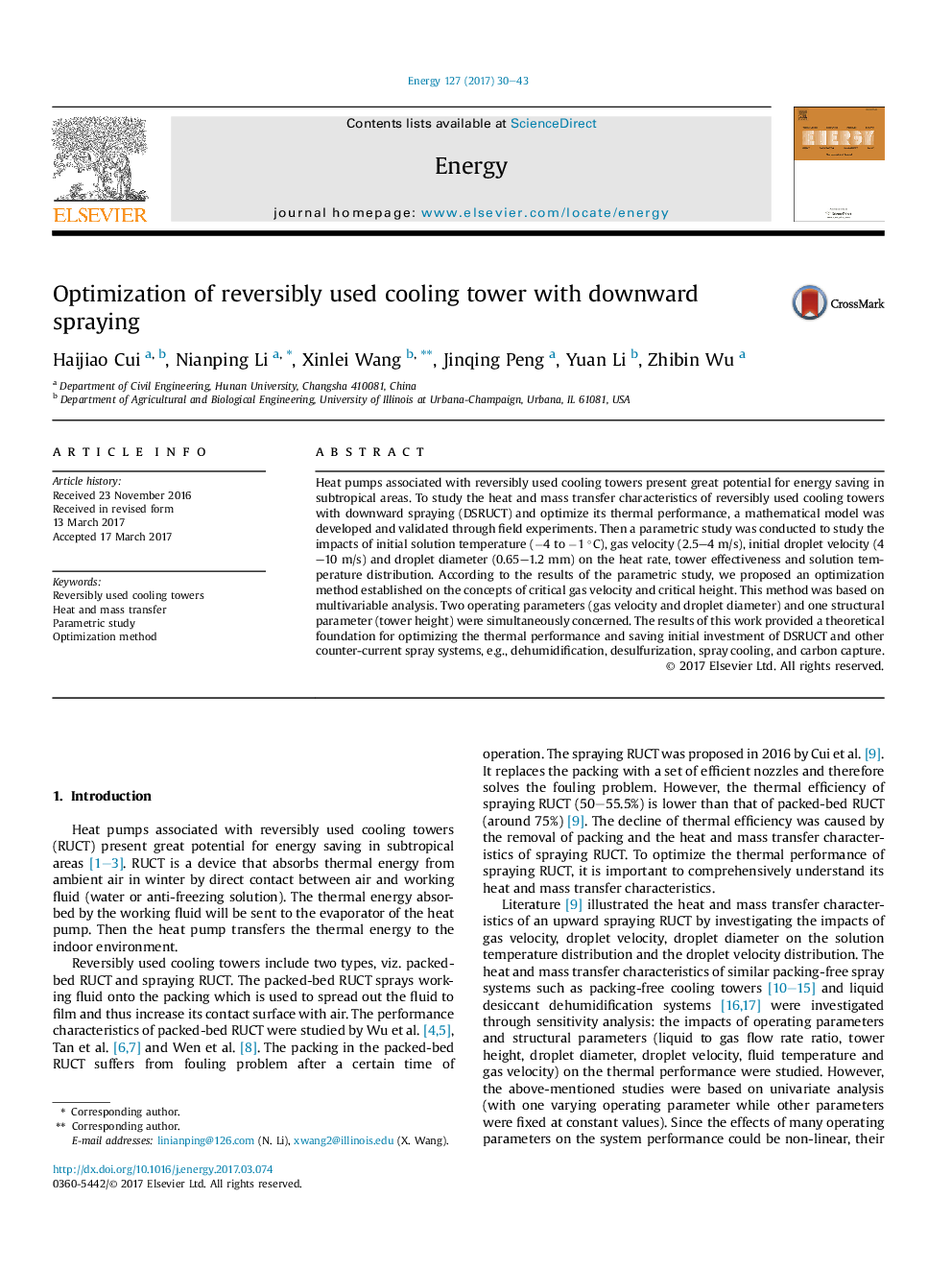| Article ID | Journal | Published Year | Pages | File Type |
|---|---|---|---|---|
| 5476788 | Energy | 2017 | 14 Pages |
Abstract
Heat pumps associated with reversibly used cooling towers present great potential for energy saving in subtropical areas. To study the heat and mass transfer characteristics of reversibly used cooling towers with downward spraying (DSRUCT) and optimize its thermal performance, a mathematical model was developed and validated through field experiments. Then a parametric study was conducted to study the impacts of initial solution temperature (â4 to â1 °C), gas velocity (2.5-4 m/s), initial droplet velocity (4-10 m/s) and droplet diameter (0.65-1.2 mm) on the heat rate, tower effectiveness and solution temperature distribution. According to the results of the parametric study, we proposed an optimization method established on the concepts of critical gas velocity and critical height. This method was based on multivariable analysis. Two operating parameters (gas velocity and droplet diameter) and one structural parameter (tower height) were simultaneously concerned. The results of this work provided a theoretical foundation for optimizing the thermal performance and saving initial investment of DSRUCT and other counter-current spray systems, e.g., dehumidification, desulfurization, spray cooling, and carbon capture.
Related Topics
Physical Sciences and Engineering
Energy
Energy (General)
Authors
Haijiao Cui, Nianping Li, Xinlei Wang, Jinqing Peng, Yuan Li, Zhibin Wu,
